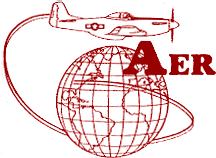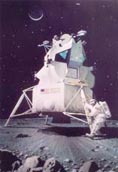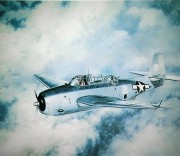|
Fear of Flying
By Carlton W. Austin
“I’m going to touch your breasts now.” Could TSA’s latest policy be the final nail in the coffin for U. S. air carriers?
“Routinely, my breasts are being cupped, my behind is being felt,” said Lu Chekowsky, an advertising executive from Portland, Ore.
She "was all over me with her hands," Patti LuPone, a singer and actress flying through Fort Lauderdale airport, said, adding that her assailant didn’t miss the opportunity to explore her groin area and breasts.
No, these women weren’t being accosted by masked men intent on rape, nor were they guests on the Howard Stern show. They were being interviewed by a New York Times reporter about what they described as an all too frequent experience at the airport: being patted down as part of TSA’s enhanced security screening procedure.
Fortunately (or not) for Ms. Chekowsky, her tormentor was a female, but recent TSA regulations allow for a male screener to pat down a woman if no female screener is available.
According to the Times article, Heather L. Maurer, a business executive from Washington, wasn’t so lucky. She complained that while preparing for a recent flight out of Logan Airport in Boston, she had to agree to a full-body pat-down, including having the male screener lift her shirt so he could look down the back of her pants. "I said, 'I am really uncomfortable having you feel me up,' but I basically had no choice. It was either that or miss my flight."
The new TSA policy, instituted in mid-September as part of the 9/11 Commission’s recommendations and after two female Chechen Islamo-fascists brought down a pair of Russian passenger planes, killing 90 innocent people, states that "…screeners are to use the back of the hand when screening sensitive body areas, which include the breasts (females only), genitals and buttocks." Screeners are given wide latitude as to whom they can grope, needing only a “visual observation” to trigger the search, and while anyone can request a same-sex screener to do the secondary screening, in reality if you do make the request, you will likely miss your flight.
And if you thought that a secondary screening resulting in a pat-down is a rare occurrence, think again. According to Amy Von Walter, a spokeswoman for the Transportation Security Administration, up to 15 percent of the total daily passenger load is selected for a secondary screening, which may or may not include a pat-down. This amounts to as many as 300,000 incidents per day! Unfortunately, there is no breakdown as to how many of those receiving a secondary screening are women; however, even if you ignore the obvious motivation for male screeners (no laughing matter, just a recognition of male human sexuality. Take a look at Ms. LuPone to see what I mean), the concern is clearly that women can hide a substantial amount of explosives in their bra. 
Give me a break, you say? How much explosive can you get in a bra, even if you pack both sides? Well, remember the shoe bomber? If Richard Reid could load enough plastic explosive into a tennis shoe—albeit a size 14—to bring down a 747 (provided it is well placed. See sidebar), a lady sporting even modest-sized double-A cups could do much worse damage, even without much thought as to where she sat. And can you imagine the crater a “pregnant” woman could create? A vintage WWII B-17 couldn’t deliver much more explosive power, given the improved chemistry represented by C-4, Semtex and other high-tech explosives.
Preliminary studies by the FBI indicate Reid's black suede basketball shoes contained between 8 and 10 ounces of the explosive triacetone triperoxide, or TATP -- called "The Mother of Satan" by Palestinian militants, because its inherent instability makes it dangerous to both the victims and bomb maker.
The TATP in Reid's shoes was "blended" with an explosive called PETN, or pentaerythritol tetranitrate, which can be ignited with a normal cigarette lighter. PETN is a key ingredient of Semtex, the Czech-made military explosive used to down Pan Am Flight 103 over Lockerbie, Scotland, in 1988. -- Simon Reeve, San Francisco Chronicle
So the danger is all too real. Passengers must be protected. But at what cost?
Today, United Airlines, U. S. Airways, Hawaii Airlines and ATA are in bankruptcy. Delta, trying to restructure its debt, recently made headway by getting $1 billion in wage concessions from their pilots (a good move by the pilots, in my opinion). Northwest Airlines just recently announced a successful restructuring of its revolving credit facility, but still faces meaningful challenges. Fuel prices, at highs not seen since the 70s, hang like an albatross around the industry’s neck, which collectively lost about $1.1 billion for the last quarter. (Industry analysts predict a $5.5 billion collective loss this year, after losing about $30 billion since 2000.) So, at a time when competition prevents any significant rise in ticket prices, the last thing the industry needs is something else to discourage air travel.
Which is why TSA’s current method of passenger screening is problematic: the cure, as they say, is worst than the disease. The proof is in a recent America Online poll that asked “How would you feel about being patted down at an airport?” The results, though admittedly not scientific, reveal that fully 28% would “curtail my air travel to avoid it.” An additional 23% said they’d “consent, but feel embarrassed.” Even if the numbers are only half right, they portend what could be a fatal tsunami about to crash onto the shores of the airline industry, washing away any hope of recovery for what is a linchpin of the U. S. economy.
What to do?
Ultimately, the solution is a technological one: develop an explosives sniffer that can be employed like the metal-detecting wand now in use for primary screening.
But until such technology is available, we need to face the hard truth that passenger profiling using race, ethnicity, religion or any other proven discriminating factor, for that matter, is necessary. The current failed policy is the brainchild of U.S. Transportation Secretary Norman Y. Mineta, promulgated a mere ten days after the horrors of that beautiful September morning in 2001 and which, as noted by former Navy secretary John Lehman during the 9/11 Commission hearings, remains in place.
Now let’s play a simple game. Say there are ten men standing before you. One has a lottery ticket worth $1,000,000. If you guess who has the ticket, you get the money. You have one guess. Two of the men are Middle Eastern—you know this by the way they talk, the way they look and the Koran each has tucked under his arm. But wait. You are given one crucial additional piece of information: with 90% probability the ticket is held by one of the Middle Eastern men. Are you going to chose at random and have a 10% chance of winning, or are you going to chose between the Middle Easterners and have a 45% chance?
This is an oversimplified example, to be sure, but only slightly. Moreover, I’m not suggesting that all our resources be concentrated on any subset of the population; random searches of the non-profiled groups would be prudent and should continue. Still, the overall process would avoid the ridiculous—no, worse, the inefficient and the ineffective—overuse of non-discriminatory, random screening, the kind that causes 15% of all passengers to be selected for further, more detailed scrutiny, including pat-downs, the kind that allowed Jenepher Field, a 71-year-old who walks with the aid of a cane, to endure a breast pat-down at a Kansas City, Mo., airport not long ago, the kind that will spell the end of the airline industry as we know it.
Would profiling be an inconvenience to those in the target group? Well, sure, but it’s a small premium to pay to spare a much larger group of your fellow Americans the same inconvenience. (Look at it this way, at least you’re not in Iraq. And wasn’t it Bill Clinton who wanted everyone to be responsible for some minimal form of community service?)
So here’s my suggestion. Since President George W. Bush is in the process of restructuring his administration as he looks forward to his second term, I think it’s an opportune time to take a good look at the possibility of injecting some new blood into the Department of Transportation and the Transportation Security Administration. Norman, it’s been nice knowing you.
|



